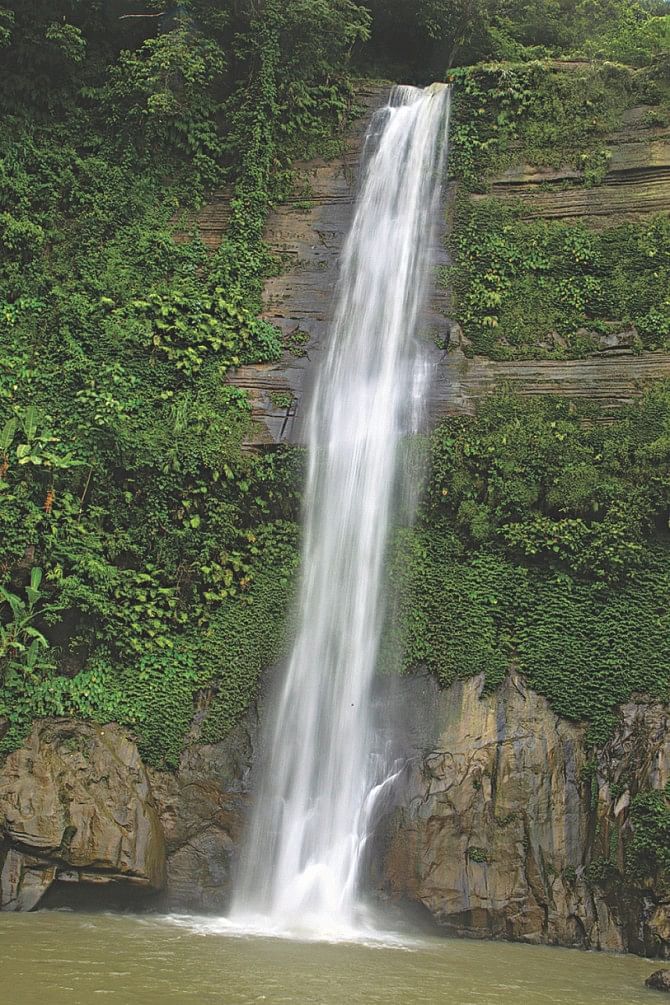Madhobkundo
Madhobkundo

To reach the waterfall at Madhobkundo, you take the road towards Borlekha from Moulvi Bazar. Go past Kulaura and the Juri intersection. Just before reaching Borlekha you turn right into a smaller road and follow it for eight kilometres to Madhobkundo Eco-park. The drive is ninety minutes from Moulvi Bazar.
I set out very early on a monsoon morning. Soon the pastoral fields near Moulvi Bazar gave way to the well-kept tea gardens along Kulaura Road. Turning north at Kulaura, I travelled parallel to the Patharia Hills far to our right. Monsoon's saturated greenery surrounded us: tea hills, rice fields, or well-tended groves of hardwood trees. As we approached Borlekha the vegetation changed subtly as Agar trees replaced the usual hardwood trees.
The final eight-kilometre stretch was a smaller road in poor repair. The 265-hectare park entrance was at its end. Entry was ten taka per person; mandatory parking at a nearby lot cost fifty taka.
From the entrance it was a fifteen-minute walk to the falls. The walkway was lined with trees on both sides of the well-kept path. There was a Parjatan café, public toilets and a changing room.
I heard the waterfall for some time, but when I finally saw it at the end of the path, I was pleasantly surprised at its proximity. The viewing point was at the edge of a pool. Across the pool, about a hundred feet away, the hillside – in the Patharia range - rose vertically two hundred feet. The stream fell from the top. It was a generous flow, powerful and frothy, brimming with monsoon's promise.
Except for a tourist family frolicking in the water, the park was empty – my reward for the early start. As I photographed the waterfall, a young man appeared next to me. He introduced himself as Shaikhul, a guide. “There is another waterfall nearby where you can get much closer to the falling water,” he said.
I took my time photographing the waterfall, enjoying the fine mist more than my camera did. When I finished, I asked Shaikhul to show me the other spot. We crossed the stream flowing from the pool and walked up a second streambed for ten minutes. The water sparkled and cascaded over rocks. As promised, there was a second waterfall at the mouth of the stream. Perhaps 150 feet tall, it was called Merukundo.
Shaikhul was sure-footed and confident during our detour, helping carry my cameras. Perhaps as a caution not to wander away without a guide, he narrated stories about past accidents. A woman had waded into the large pool underneath the main waterfall during the monsoon. While she was there, the water's flow increased unexpectedly, raising the water level. The woman was not a swimmer. She was unconscious when finally rescued, later dying at Borlekha hospital.
As I left the park, droves of visitors had started arriving. On the way out I chatted with park personnel who said that peak season attendance is four thousand visitors every day.
They had a request for me: “Please mention the road's poor condition when you write. It discourages many from visiting this place.” Indeed, a better road would certainly enhance the traveller's experience at Madhobkundo, a beautiful place.
www.facebook.com/tangents.ikabir